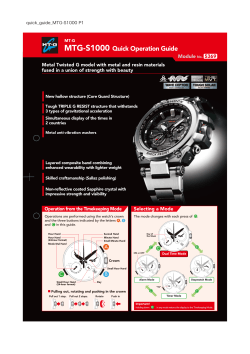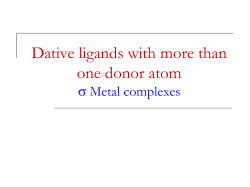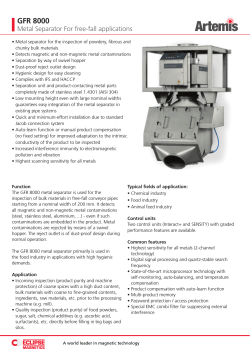
CALL FOR PAPERS Bioinorganic Chemistry and Applications Special Issue on
Bioinorganic Chemistry and Applications Special Issue on Bioactivities of Organotransition Metal Complexes including Metallocene CALL FOR PAPERS During the last thirty years, the chemistry of organotransition metal complexes has continued to experience explosive growth in novel substances, new reactions, surprising mechanisms, and further applications to both organic synthesis and industrial processes. Applications and interest in organotransition metal chemistry have increased manifold due to not only its novelty, but also the unusual advantage, for example, nearly immediate application to chemical and pharmaceutical industries. Many applications of organotransition compounds utilize this robustness, which is even further elevated in cyclometalated compounds or units. In turn, the ease of use of the metalation reaction in activating H-C or X-C functions opens a vast field of synthetic organometallic chemistry. Lead Guest Editor Rajeev Singh, University of Delhi, New Delhi, India rajeev@arsd.du.ac.in Although most new drugs are carbon based compounds, there is an increasing realization that many metal ions are involved in natural biological processes and that there is much scope for the design of metal-based therapeutic agents. Metal complexes with their wide spectrum of coordination numbers, coordination geometries, thermodynamic and kinetic preferences for ligand atoms, and in some cases redox activity offer novel mechanism of action which are unavailable to organic compounds. In general, the nature of the metal ion, its oxidation state, and the types and number of bound ligands all exert a critical influence on the biological activity of a metal complex. An understanding of how these factors affect biological activity should enable the design of metal complexes with specific medicinal properties. Sulekh Chandra, University of Delhi, New Delhi, India schandra_00@yahoo.com This special issue emphasizes the potential of organotransition metal complexes in various fields. Potential topics include, but are not limited to: Synthesis and characterization of new organotransition metal complexes including metallocene Experimental techniques in organotransition chemistry Role of organotransition metals against various types of cancers Antiviral, antimicrobial, antimalarial, and antioxidant Radioimaging Immunosuppression Biocatalysis and biosensors Role as DNA intercalators The biological properties of metal complexes, such as antimicrobial, antioxidant, cytotoxic, or otherwise Explaining biological properties using theoretical techniques like QSAR Guest Editors Luiz Gonzaga De França Lopes, Universidade Federal do Ceará, Fortaleza, Brazil lopeslu@dqoi.ufc.br Pratibha Chaudhary, University of Delhi, New Delhi, India prats20@yahoo.co.in Amit Kumar, JAIST Housing, Ishikawa, Japan amitkumar@jaist.ac.jp Manuscript Due Friday, 23 January 2015 First Round of Reviews Friday, 17 April 2015 Publication Date Friday, 12 June 2015
© Copyright 2025





















